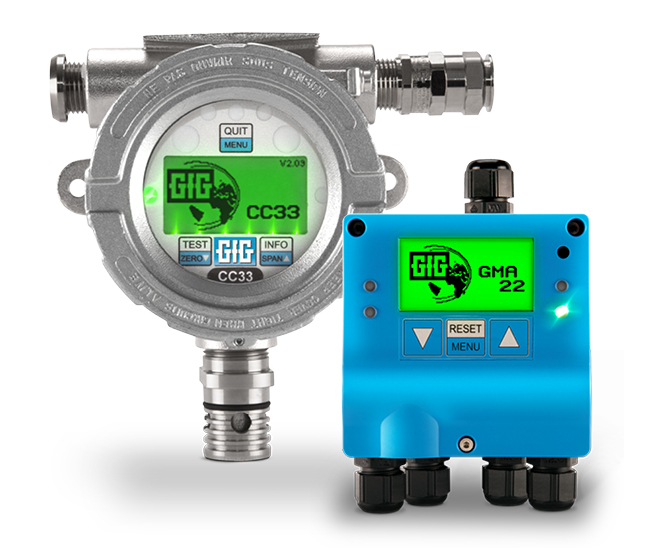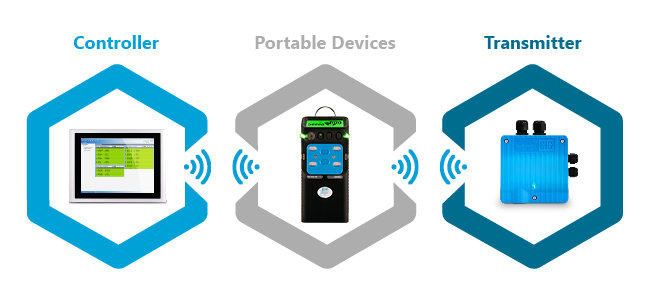ACDC - smart Communication Technology
ACDC (Analog Carrier for Digital Communication) is a patented technology which uses existing analog cabling of gas detection systems for digital data transmission. The advantage: the existing cables remain in place, transmit digital information in addition to the mere measured values, and can be used in the future to integrate portable detection devices into fixed systems.
The problem:
analog wiring in a digital world
The majority of gas detection systems installed today communicate on three-wire power lines (4-20 mA industry standard). While existing infrastructure is understandably not immediately being replaced everywhere for cost reasons, today's smart sensors and transmitters could provide far more information to the controller than what can currently be transported using analog wiring.

The solution:
digital data transmission on existing systems
ACDC enables analog 4-20 mA lines to transmit digital information by superimposing amplitude modulation on the current signal. It uses the reliable Modbus protocol, which is already employed by numerous digital GfG transmitters. ACDC permits transmission rates of up to 38,400 bit/s and distances of more than 1,200 meters via analog cabling. It is suitable for use in hazardous areas and allows for retrofitting and gradual conversion to digital systems, as the existing analog cabling remains untouched. While measured values and additional information are transmitted digitally, the analog carrier signal serves as a backup in case of an error. This guarantees safety across the board.

The future:
integration of fixed and portable gas detection systems
The available bandwidth provides sufficient capacity to transmit more than just digital data from smart sensors and ACDC-enabled transmitters. The next logical step is the integration of portable gas detectors. Since they are equipped with radio transmitters, alarms and measured values can be conveyed to the fixed gas detection system. This creates a holistic safety concept based on analog wiring.

